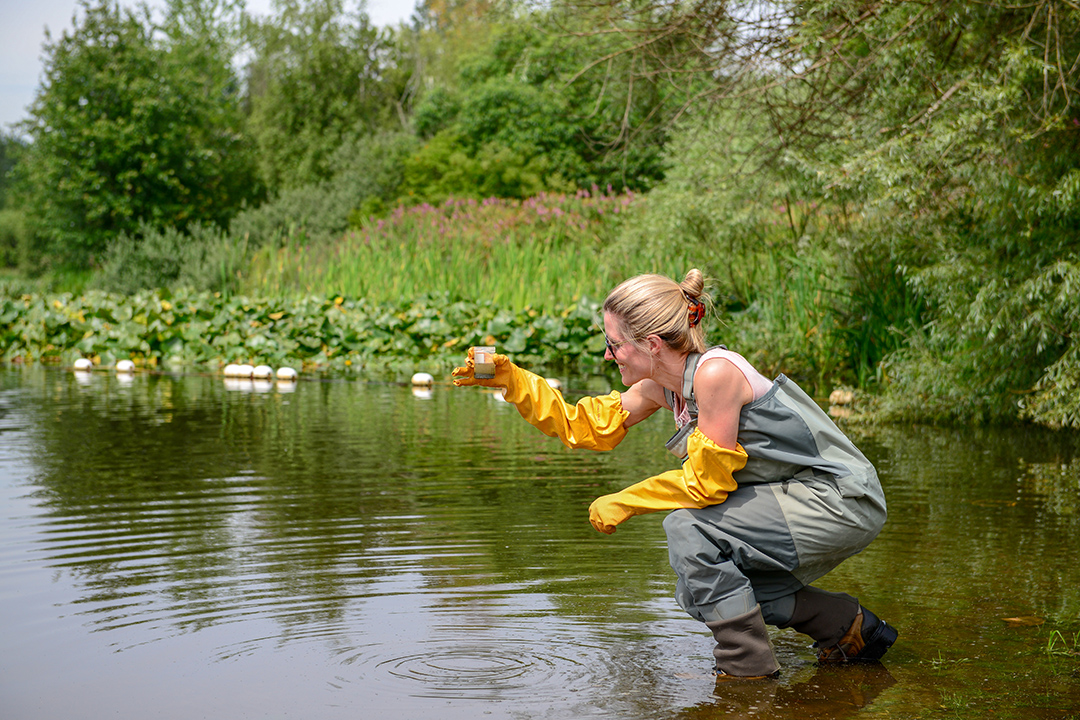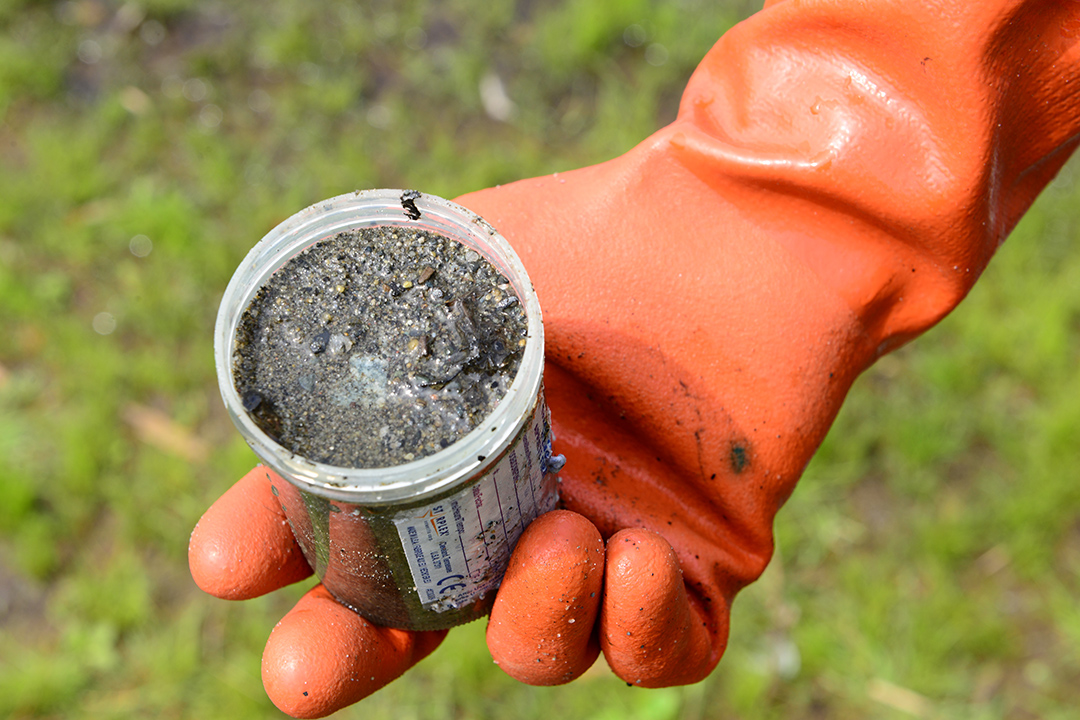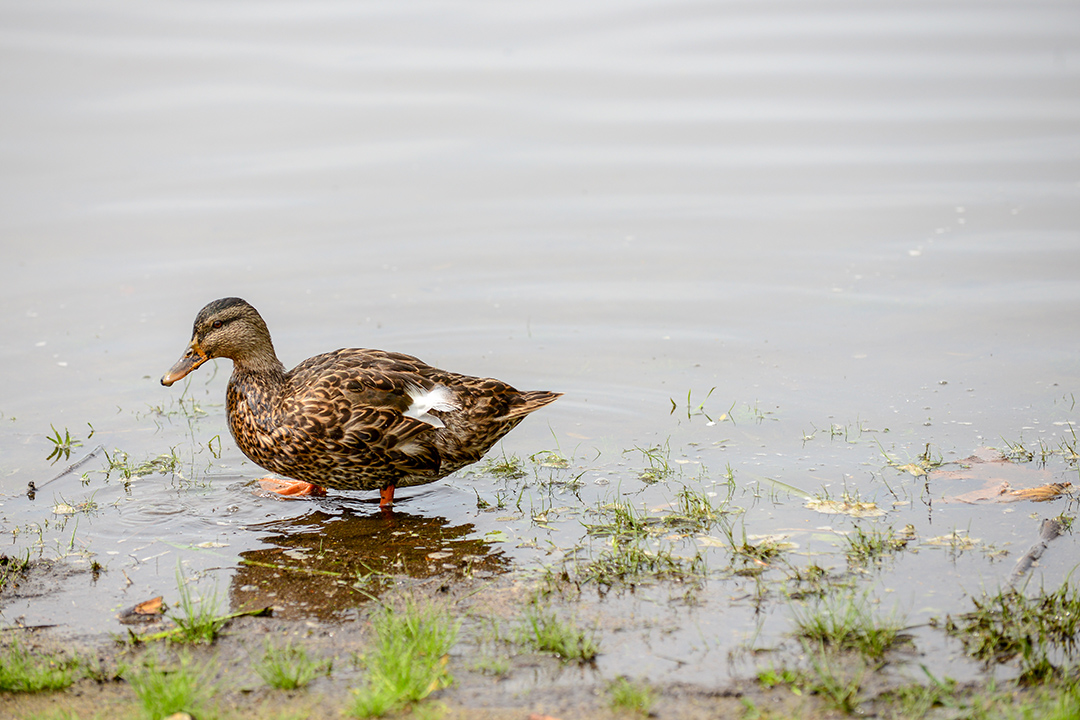
Detecting bird flu before it's ready to take off
What did you eat for breakfast this morning? What about for lunch and dinner? Chances are you ate eggs or chicken for at least one of those meals. In Canada, poultry products are the most commonly consumed animal protein source; the average Canadian eats 242 eggs and 79 pounds of chicken each year.
By Delaney Schofer
Now imagine a virus that infects wild ducks and geese but doesn’t cause them to display any symptoms. This virus is also transmitted from wild ducks and geese to domestic birds such as chickens, but it’s much more deadly in these domestic birds. In fact, it often decimates entire flocks.
What would a virus like this mean for the average Canadian? There would be fewer poultry products available, so you would have to fork over more money or put a different food on your fork. Inconvenient, right?
It gets worse. This virus can also infect people, and although infection is rare, it can cause serious illness or even death.
This scenario is a description of avian influenza virus — often referred to as bird flu.
Canada is one of only 11 countries worldwide that doesn’t have avian influenza virus circulating within its domestic poultry flocks. Canada is committed to maintaining this disease-free status and avoiding trade restrictions being placed on the country’s poultry products.
As part of maintaining this disease-free status, Canada is required to have systems in place that screen for avian influenza in wild ducks and geese so veterinary and public health officials can prevent and control potential outbreaks.
The current method of detecting avian influenza in wild waterfowl involves testing live and hunted birds. But unfortunately, this technique isn’t very effective.
“Wild birds that die naturally of other causes are brought in [to the lab for necropsy and avian influenza testing],” says Dr. Chelsea Himsworth, a diagnostic pathologist and the leader for veterinary science and diagnostics at British Columbia’s Animal Health Centre.
Himsworth is also an adjunct professor in the Western College of Veterinary Medicine’s Department of Veterinary Pathology and regional co-ordinator of Canadian Wildlife Health Cooperative B.C.
“This current method of passive surveillance is like looking for Ebola [virus] in car crash victims — the two are not related. It’s no wonder we don’t detect it.”

Mother Nature's outhouse
In 2014-2015, passive surveillance failed to detect a highly pathogenic strain of avian influenza that was circulating in wild ducks in B.C. When this strain of avian influenza entered the province’s domestic poultry population, 240,000 birds died or had to be culled.
The B.C. Animal Health Centre is a branch of the Ministry of Agriculture and is located in Abbotsford, part of the province’s Fraser Valley. Each year, Himsworth and her colleagues witness the annual migration of wild birds through the second-densest area of poultry production in Canada.
Frustrated by the inadequacy of avian influenza surveillance methods, Himsworth and her team set out to find another way to detect avian influenza in wild birds before any further outbreaks in poultry occurred.
In 2015, they developed a new genomics technique for detecting avian influenza virus in wetland sediment—a rich source of material because avian influenza virus is shed in bird feces. Each sediment sample contains contributions from different individuals and species, making sediment sampling more efficient than sampling individual birds.
“Wetlands are mother nature’s outhouse,” says Himsworth. “A little bit of pond scum can give us a lot of information.”
Fast-forward four years, and the genomics technique to analyze “pond scum” is almost complete. However, the whole process is not as simple as developing a method that works, dusting wetland sediment off your hands, and moving on. The next step is to begin implementing this technique across the province.
“There’s a huge gap between research and development and packaged implementation,” explains Himsworth. “On one hand, you have academia, and on the other, you have public health labs that are very clinically based. Applied genomics is in the middle of this spectrum. So the question becomes, what do you do with technologies that are ready for implementation but aren’t packaged enough to run in a clinical environment?”
Creating a genomics package
Although it’s promising, sediment surveillance still has a way to go before it is a neatly packaged productthat can be easily completed in a lab. The major challenge is that the B.C. Ministry of Agriculture doesn’t have the genomics resources required to iron out the kinks in this new surveillance technique.
To develop the initial genomics technique, Himsworth and her team partnered with the B.C. Centre for Disease Control. However, along with their research project, this temporary partnership is wrapping up, and Himsworth is looking for ways to implement the technology that she has spent nearly half a decade developing.
Creating a packaged genomics product that can be easily implemented isn’t a challenge unique to avian influenza; the technologies could be used for other disease surveillance initiatives by researchers in the province’s Ministry of Agriculture and Ministry of Health.
“There are a lot of pieces on the board,” says Himsworth. “We’re still talking about all the potential models, including what it might look like to have a health-agriculture partnership to support an applied genomics centre.”
Sharing resources and expertise would not only assist each ministry in achieving its mandates, but a One Health genomics centre could also be a solution for the larger need to develop genomics capacity and co-ordination within the province.
Himsworth and her research team have received financial support from the Governments of Canada and B.C. (Growing Forward 2 program), the Canadian Food Inspection Agency, Genome BC/Genome Canada, and the Sustainable Poultry Farming Group.
Delaney Schofer of Calgary, Alta., is a third-year veterinary student at the Western College of Veterinary Medicine (WCVM) whose research position was supported by the college’s Interprovincial Undergraduate Student Summer Research program. Her story is part of a series of articles written by WCVM summer research students.
